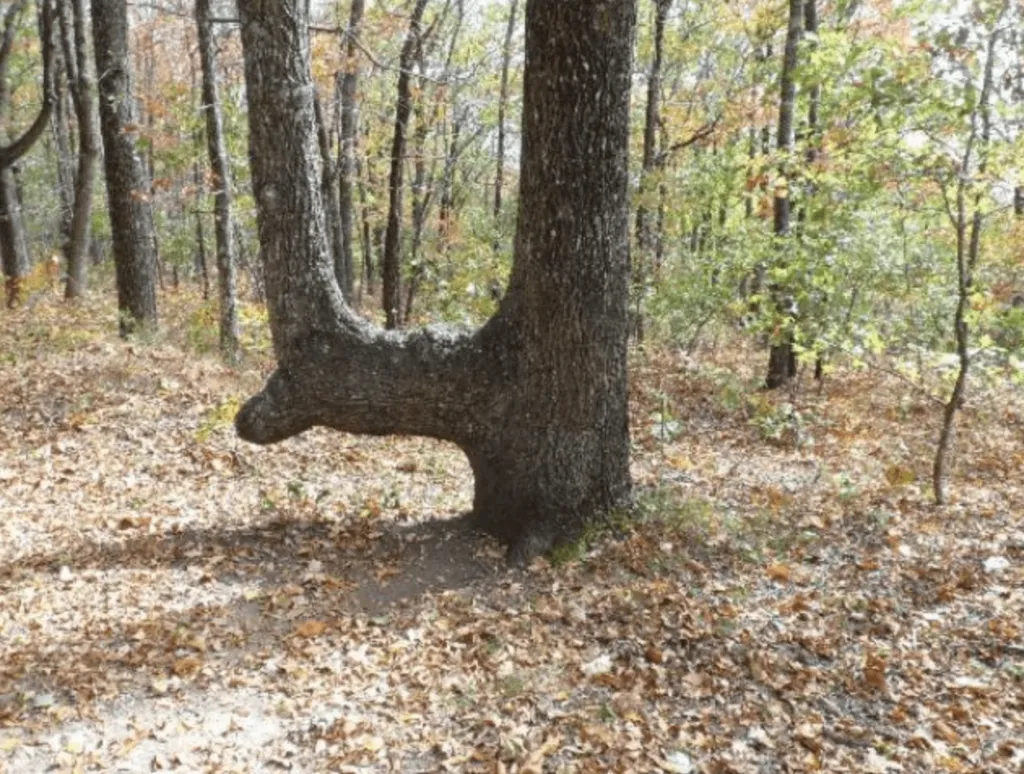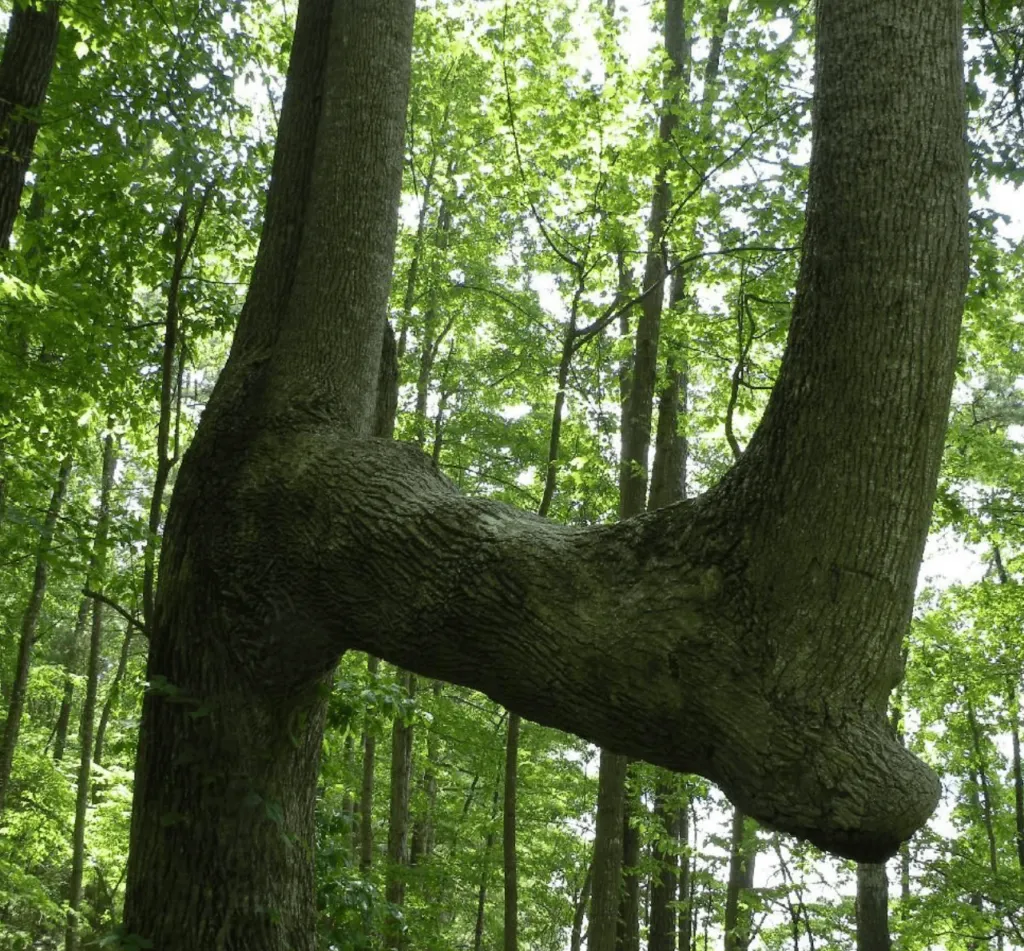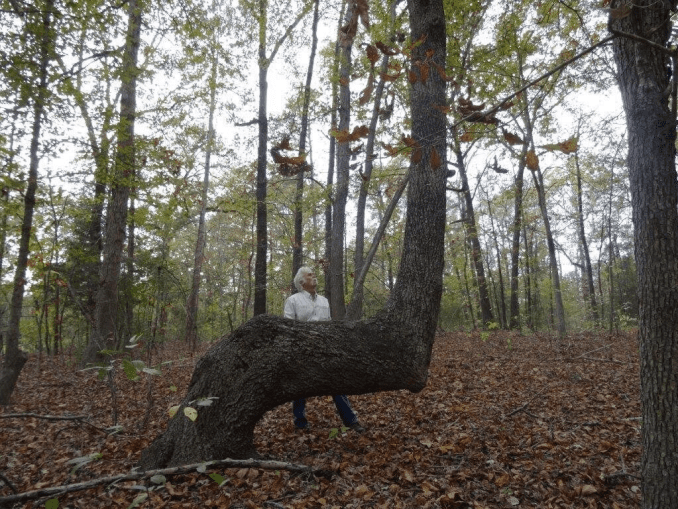In a time long before GPS and digital maps, navigating through forests or unfamiliar terrains relied on intuition, knowledge of the land, and ingenious markers. Among these, bent trees—crafted by Native Americans—stood as nature’s signposts. These trees weren’t mere accidents of nature; they were purposefully shaped to guide travelers to water sources, safe paths, and significant landmarks. Today, these bent trees remain a testament to Native American ingenuity and their harmonious relationship with the environment.
The Ingenious Practice of Bending Trees

Native American tribes developed a technique to manipulate young saplings into specific shapes, creating living markers that could last centuries. These trees were strategically placed along trails to serve as navigational aids, pointing the way through dense forests and across challenging landscapes.
How Were Bent Trees Created?
The process of creating these trail markers required patience and precision. Young trees, pliable and easy to shape, were selected and bent at deliberate angles. The trees were held in place using stakes, ropes, or heavy stones to anchor them in the desired position. Over time, the trees grew into the shape they were guided to take, retaining their distinctive bends for decades—even centuries.
Key features of bent trees include:
- Distinct Angles: Sharp bends that stand out from natural growth patterns.
- Protrusions or “Noses”: Unique shapes that serve as pointers, leading travelers in the intended direction.
- Strategic Placement: Positioned near water sources, trails, or sacred sites to ensure they were functional and purposeful.
What Sets Bent Trees Apart from Natural Curves?
At first glance, a bent tree might look like a natural anomaly caused by wind, animals, or other environmental factors. However, upon closer inspection, there are unmistakable clues that reveal their man-made origins.
Unmistakable Bends
Unlike natural bends, which tend to be gradual and irregular, Native American bent trees have deliberate angles and curves. These shapes are too precise and purposeful to be accidental.
Scars and Notches
Marks left by the ropes or straps used during the bending process are often visible, even after many years. These scars provide clear evidence of human intervention.
Functional Directionality
Each tree was shaped to point toward something—a nearby water source, a trail junction, or even a safe place to cross a river. Their placement was intentional, making them reliable guides for travelers.
The Role of Bent Trees in Native American Navigation
Bent trees were more than just markers; they were vital tools for survival. In the vast, uncharted wilderness, these trees guided tribes, hunters, and traders to essential resources and safe passageways.
Guiding to Water and Shelter

Many bent trees point directly to water sources, a lifeline in any wilderness journey. Others indicate the location of shelter or landmarks, ensuring that travelers could find safety in unfamiliar terrains.
Marking Sacred and Significant Sites
Some trees marked culturally significant places, such as sacred grounds or ceremonial areas. They served as both practical tools and symbols of deeper cultural connections to the land.
A Living Legacy
Even today, many of these trees stand tall, their distinctive shapes preserved as historical artifacts. They silently recount the stories of those who once relied on them, offering a glimpse into the past.
The Fragility of Bent Trees and the Push for Preservation
Despite their historical significance, many bent trees face threats from natural aging, deforestation, and urban development. Efforts to preserve these unique markers are vital for maintaining this cultural heritage.
The Mountain Stewards Initiative
Organizations like the Mountain Stewards have taken on the mission of documenting and protecting bent trees. Through meticulous mapping, they’ve identified over 1,000 such trees across the United States. This initiative not only preserves the physical trees but also raises awareness of the Native American practices that shaped them.
The Risk of Loss
Without active efforts to protect them, these trees could disappear, taking their stories with them. Preservation ensures that future generations can learn from and appreciate this ingenious blend of nature and human ingenuity.
Why Bent Trees Matter Today
Bent trees are more than relics of a bygone era—they carry lessons and stories that remain relevant in the modern world.
A Testament to Human Ingenuity
These trees showcase the creativity and resourcefulness of Native American tribes. By working with nature, rather than against it, they created durable, functional tools that have stood the test of time.
A Reminder of Cultural Connection

Bent trees symbolize a deep connection to the land, reflecting a way of life that respected and relied on the natural world. They serve as reminders of the importance of preserving our environment and the knowledge of those who came before us.
Educational Opportunities
For historians, environmentalists, and nature enthusiasts, bent trees offer a unique opportunity to study indigenous navigation techniques and gain insight into the landscapes of the past.
How You Can Help Protect Bent Trees
If you’re inspired by the history and significance of bent trees, there are ways you can contribute to their preservation:
- Educate Yourself and Others: Learn about bent trees and share their story with others to raise awareness.
- Report Discoveries: If you come across a bent tree that appears to be a trail marker, report it to organizations like the Mountain Stewards.
- Practice Responsible Tourism: When visiting areas with bent trees, respect their environment by avoiding damage to the trees or their surroundings.
The Enduring Legacy of Bent Trees
Bent trees are living monuments that tell the stories of ingenuity, survival, and a deep respect for the natural world. They remind us of a time when people worked in harmony with nature, using its resources creatively and sustainably.
So, the next time you’re wandering through a forest, keep an eye out for these unique markers. That oddly bent tree might just be a piece of history, silently pointing the way for travelers long gone.
By preserving and honoring these trees, we ensure that their stories continue to inspire, educating future generations about the wisdom and resourcefulness of the Native American tribes who shaped them. Let’s protect these natural signposts and the invaluable legacy they represent.


